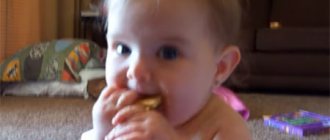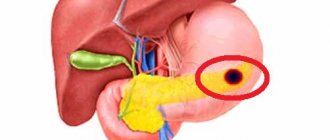The Mantoux test is a kind of diagnostic vaccination that helps determine the presence or absence of tuberculosis bacteria in the human (child) body. The Mantoux test can measure the body's immune response to subcutaneous injection of tuberculin.
Tuberculin is a tuberculosis bacterium that has been thermally sterilized and treated with special fragments.
It includes:
- Fragments of tuberculosis bacteria that have undergone chemical and thermal treatment.
- Stabilizer called Twin-80.
- Phenol is a preservative.
- Sodium phosphate and potassium phosphate.
- Sodium chlorine.
- Purified water.
This test (Mantoux test for tuberculosis) is successfully used in different countries of the world. Thanks to this method, it is possible to determine whether a person is infected with Koch's bacillus (tuberculosis bacillus) or not. Carrying out the Mantoux reaction in childhood implies defining a different goal. More on this later.
When should you see a doctor?
If a child’s Mantoux result does not correspond to the norm, then this is not yet a sign of tuberculosis infection.
But it’s still worth contacting a specialist. Indications for consultation with a phthisiatrician:
- Annual increase in papule size.
- The Mantoux test of other children in the family does not correspond to the norm.
- A sharp increase in infiltration volume compared to last year's results.
- Contact with patients with tuberculosis (especially those with open form).
- Detection of this disease in family members or close relatives.
The phthisiatrician evaluates not only whether the Mantoux size corresponds to the norm, but also the results of additional studies such as chest X-ray and microscopic examination of sputum. In some cases, additional computed tomography is required.
If the doctor suspects tuberculosis of another location (tuberculosis of bones, kidneys, tuberculous meningitis), then examination methods such as bone scintigraphy, ultrasound, spinal puncture, cytological examination, etc. may be prescribed.
Thus, the Mantoux test for tuberculosis is a diagnostic method for examining patients of different ages, so the concept of normal in children may have age-related differences. It has been proven that after the administration of tuberculin, adverse reactions may develop, but there is no risk of infection from the test.
There are clear criteria for assessing the result of a reaction. With the help of simple measurements you can find out whether the size of Mantoux in children corresponds to the norm or not.
Is tuberculin dangerous for a child?
Like any allergen, the antigens of Mycobacterium tuberculosis are regarded by the body as foreign substances - because of this, an allergic reaction begins; antibodies try to destroy the introduced protein.
Due to the activation of the immune system, it may seem that the child is sick - typical symptoms of intoxication of the body appear:
- dry non-productive cough;
- low-grade fever - temperature 37–38 °C;
- general malaise.
In adults, this condition can be detected if the immune system is too sensitive - this is rare; In children, hypersensitivity of the defense system is normal, so symptoms appear more often.
Deterioration in the child’s well-being after the procedure can be caused by the low quality of the administered tuberculin - the immune system begins to react not only to the protein itself, but also to various impurities in the drug.
It should be borne in mind that all these negative reactions are temporary and disappear within a week after the administration of tuberculin. Because of the risk of their manifestation, one cannot refuse the test, because in childhood only it can show the presence of the tuberculosis pathogen in the body - all other tests are too dangerous for a two-year-old child.
What should be the normal Mantoux reaction in children?
After the first tuberculosis vaccination, immunity from this deadly disease does not disappear for 7 years. How long the protection against a dangerous pathology will last can be judged by the size of the rounded scar remaining on the shoulder after vaccination. The larger this size, the longer a person remains vaccinated against tuberculosis.
The reaction to Mantoux appears after the injection the next day. It looks like a small papule at the sample injection site. 3 days after the injection, the immune system reacts to the “invasion” of tuberculin with maximum force.
The Mantoux norm varies depending on the age of the baby:
Norm Mantoux, made for the first time at 1 year
For the entire year before the second test, almost all children’s reaction to tuberculin can be called doubtful or positive. For yearlings with a post-vaccination scar, redness is considered normal if its diameter is in the region of 5-11 mm.
The photo shows what the first Mantoux looks like:
Normal for children from 2 to 6 years old
In the 2nd year, anti-tuberculosis immunity is usually strongest. When the size of the post-vaccination scar exceeds 8 mm (that is, what it should be when the baby is 2 years old), then Mantoux can easily reach as much as 16 mm. When a child is over three years old, immunity to tuberculosis begins to weaken. However, in most cases, a positive or questionable reaction to tuberculin persists at 4, 5, and 6 years of age. During this period, the normal size for a papule is a maximum of 10 mm. To accurately determine which parameters are optimal at this age, you should compare it with the post-vaccination tuberculosis trace.
| Post-vaccination scar (mm in width) | Normal papule (in millimeters) |
| Maximum 2.0 | no reaction |
| Within 4.0-6.0 | 5,0-6,0 |
| 6.0 and more | maximum 10.0 |
At 6-7 years old
The reaction to the test performed in the vast majority of cases can be called questionable or negative. This is a sign that immunity to tuberculosis is beginning to disappear. That is why at the age of 7 all children receive a second anti-tuberculosis vaccination.
Normal for 7-14 years old
After revaccination, a new 7-year cycle begins. At the age of 3 to 10 years, the child has good reliable immunity against tuberculosis, and the size of the papule is between 10-17 millimeters.
When the baby becomes more than 10 years old, the immune response to the invasion of tuberculin begins to weaken, and the papule decreases to 5.0-6.0 mm. At 13 years old, the absence of any reaction or the presence of a questionable one is already the norm. The papule during this period is maximum 4 mm. By the age of 14, it often disappears completely.
Positive reaction to tuberculosis
If the spot disappears almost immediately after installing the sample, everything is clear: the child is healthy and microbacteria do not take root in the body.
A positive test is a density of 5 to 10 mm, but if the size is even larger and there is suppuration, this is a very alarming sign.
With such a reaction on the face, all signs indicate the presence or predisposition of the child’s body to the disease.
If the reaction is positive, the child is prescribed additional types of research, in the form of blood, urine and sputum donation. Subsequently, all diagnostic actions are coordinated with phthisiatricians.
After the child is given the test, it is necessary to adhere to certain rules for caring for the place where the injection was given.
Reasons for distorting the result
A number of different factors can distort the results of an injection (both positively and negatively). The culprits may be:
- chronic functional and organic diseases of internal organs and body systems;
- various infectious pathologies, especially colds with high fever. The Mantoux result can also be distorted in a healthy child who has recently suffered from some infectious disease;
- allergies of various natures. It is especially dangerous to test children who are intolerant to tuberculin;
- dermatitis and other skin diseases;
- liquid entering the place where the Mantoux test was placed. Even a very small amount of water can cause an allergic reaction and distort the result;
- unfavorable environmental situation in the region where the person who received Mantoux lives;
- various diseases whose main symptom is epileptic seizures;
- a period of quarantine due to a pandemic of a virus (for example, a strain of influenza);
- low quality of the drug, use of an expired sample;
- improper storage and transportation of the sample;
- the test was carried out with violations - they used a non-disposable syringe, did not treat the skin where the injection was made with alcohol.
Thus, severe swelling at the site where tuberculin was injected, or, conversely, a complete absence of swelling, is not a guarantee that the child has Koch’s bacillus or not. To find out for sure, more in-depth research and analysis will be required. The Mantoux reaction is just one of the methods by which it is determined whether there is a dangerous pathology in the body.
Methods of care after vaccination
Contrary to the rule that has been developed over the years, “Do not wet Manta!”, this is nothing more than a myth. It appeared as a result of a test that was carried out before Mantoux. The skin of the hands was scratched, and the contents of the syringe were poured onto the wound. When administering the drug subcutaneously, the ingress of water cannot affect the test result.
The injection site should not be treated with any antiseptics or rubbed with a towel. This may cause unwanted skin irritation. For 3 days, it is better to avoid sweet, peppery and citrus fruits so as not to provoke an allergic reaction.
A large papule after the Mantoux test is not a death sentence.
It is likely that this phenomenon is the result of the individual characteristics of the child. It is worth maintaining calm and composure. The right decision is to consult a specialist. The conclusion of professionals will serve as a signal of the need (or lack thereof) for further action. The article has been verified by the editors
Mantoux in children aged 4 years: norm and possible deviations
At four years old, the child undergoes the fourth Mantoux test. After vaccination, immunity accumulates significant strength by the age of one year, reaches its maximum value at the age of two, and begins to decline from the age of three.
A negative reaction to Mantoux is possible if the vaccination in the maternity hospital was not effective enough. If the scar on the forearm is small, about 2-3 mm, there is no significant strain on the immune system, protection ends by three to four years.
A negative (or questionable) reaction to the Mantoux test at four years of age is observed when the post-vaccination scar is up to five millimeters in size.
If the scar on the forearm is larger than 5-6 mm, protection against infection is more reliable. By the age of four, children show a weakly positive (papule 5-7 mm) or positive (papule 8-10 mm) Mantoux reaction.
Important! The diameter of the “button”, starting from the age of three, decreases by several millimeters at each check until the age of seven (normal). If at three years a papule measuring 10 mm was observed, at four years an infiltrate of about 8 mm would be normal.
If the swelling is still about a centimeter, the doctor will make a decision based on the child's overall health. If, when checked at age five, the papule remains the same size, the child will need to be monitored by a TB specialist. Most four-year-old children show an average result when tested - a papule of 5-7 mm. 10 mm is the maximum permissible value; with a diameter greater than this figure, it is recommended to conduct additional examinations
If at three years a papule measuring 10 mm was observed, at four years an infiltrate of about 8 mm would be normal. If the swelling is still about a centimeter, the doctor will make a decision based on the child's overall health. If, when checked at age five, the papule remains the same size, the child will need to be monitored by a TB specialist. Most four-year-old children show an average result when tested - a papule of 5-7 mm. 10 mm is the maximum permissible value; with a diameter greater than this figure, it is recommended to conduct additional examinations.
“Turn” is the main diagnostic principle that is used to assess the likelihood of infection at this age. If, compared to the result of the previous check, the papule does not decrease, but increases, then additional examination is necessary. If the “button” has increased by more than 6 millimeters over the course of a year, the child is diagnosed with “tuberculin test deviation”; observation by a phthisiatrician is mandatory.
Example. At the age of three, the diameter of the child’s papule was 5 mm (the size of the post-vaccination scar was 6 mm). The fourth check showed the size of the papule to be 15 mm. Over the course of a year, the reaction has increased by 10 mm, the likelihood of infection is high. Examination and treatment are necessary.
A hyperergic Mantoux reaction (17 mm or more) at four years of age also becomes a fairly accurate sign of possible infection. In addition to infection, a large “button” at this age occurs in the event of a severe allergic reaction of the body to chemicals, foods or medications. Infection with another, non-tuberculous mycobacterium is possible.
When assessing a sample from a four-year-old child, experts take into account not only the size of the infiltrate, but also additional signs of infection. The papule in an infected child usually festers, has a characteristic bright red color, and sometimes resembles an open wound.
When infected, the infiltrate has clear boundaries; after a week the tumor does not disappear, it becomes pigmented and turns brown. Sores and blisters appear around the injection site, and a bright red trail runs from it towards the elbow.
If the “button” is too large, but there are no additional signs, there is no need to worry in advance. A “false-positive” reaction caused by allergies or mechanical irritation is possible.
Preparation for the event
No special preparation is required for the test. It is advisable to come to the clinic in loose clothing that does not rub the injection site. You should first undergo an examination by a pediatrician. Urine and blood tests are prescribed if the doctor doubts the state of the immune system. If there is an allergy, the child is first given antihistamines. 1 week before the expected date, it is not recommended to introduce new foods into the children's diet.
How the sample is made
The child's mantoux is placed in the front of the forearm. 0.1 ml of tuberculin is injected intradermally with a disposable syringe. It is advisable to dress the child in clothes with short sleeves so that she cannot rub the papule. Do not cover the injection site with a plaster or bandage it. Such actions can lead to skin injury. The survey results will be distorted.
It is not recommended to lubricate the papule with brilliant green, iodine, hydrogen peroxide and other antiseptics. After checking the indicators, if the area is inflamed or festered, it can be treated using any means.
How and why Mantoux is made
After the BCG vaccination, the process of developing immunity begins in the baby’s body. In the first year of life, he will actually have to suffer from a local cutaneous form of the disease. Attenuated mycobacteria of bovine tuberculosis enter the body. After a month and a half, an infiltrate forms, which festers for six months, then a scar appears - evidence of the development of immunity.
It is the BCG vaccination that is a serious burden for the body, but no one would think of refusing vaccination: it provides immunity during primary infection and protects against severe forms of the disease (including meningitis).
Mantoux is a simple diagnostic procedure that forms a single diagnostic complex with BCG. The amount of the administered substance is minimal, the immune system does not receive any additional stress, and the state of health does not deteriorate.
Tuberculin does not contain living bacteria. Fragments of pathogen tissue have been repeatedly processed (both thermally and chemically) and do not pose any health hazard.
An aqueous solution of the drug is injected under the upper layer of the skin of the forearm in an amount of 0.1 mg.
Phenol, used as a preservative, is contained in each individual sample in an amount several times less than that which is released by the body itself daily during its life processes.
The reaction to tuberculin appears on the first day after the procedure. It is expressed by redness (hyperemia) and the appearance of a tumor. A compaction, an infiltrate that rises above the skin, is called a papule. It is the diameter of the papule that is the main indicator of the test result. The papule is created by active T-lymphocytes, which are concentrated at the site of infection from the nearest lymphatic ducts. If their number is large, the immune system is seriously strained.
Attention! The maximum tension of immunity in a child’s body after the first BCG vaccination is achieved by two to three years. The response to the Mantoux test at this age is most pronounced
Reaction results: photo
The results of the Mantoux test are assessed 72 hours after the injection.
Photo 1. Positive result of the reaction. At two years old this is the norm: the child has developed immunity.
Photo 2. Hyperergic reaction: the child is most likely infected or already sick with tuberculosis.
Using a special ruler, holding it perpendicular to the shoulder line, the doctor measures the diameter of the skin lump.
- If there are no traces of an injection, with slight redness without a tumor (or with a tumor of about a millimeter), the doctor states a “negative reaction” to the Mantoux test.
- A small infiltrate (from two to four millimeters), regardless of the size of the reddened area, is a “doubtful reaction” to a tuberculin test.
- A papule measuring half a centimeter or more is a positive result, a “positive reaction” to the Mantoux test.
- The size of a papule in children is 17 mm or more - an indicator of a “hyperergic reaction”, a sign of infection and disease.
Photo 3. An example of a dubious Mantoux test: the size of the papule does not exceed half a centimeter.
The essence of the examination, interpretation of the result
Results are provided only 72 hours after the injection. Based on the size of the formation, the doctor makes a conclusion about the presence of the causative agent of the disease in the child’s body. At the same time, he necessarily takes into account the individual nuances of the response to the introduction of tuberculin.
Children are considered more susceptible to tuberculosis than adults. For this reason, their examination is very significant. The first vaccination is given to children aged 1 year. It is not advisable to use the Mantoux test before this age, since the hypersensitivity of the baby’s skin does not guarantee the accuracy of this type of examination.
The assessment of diagnostic results is directly determined by the size of the papule.
Measurements are carried out 72 years after the injection of tuberculin.
The answer could be:
- Negative. During this, specific compactions and hyperemia are not observed at the injection site, which indicates the absence of contact with disease antigens. It is possible that it could have taken place in the past with further suppression of the activity of the pathogen and its effect on the child’s body.
- Positive. In this case, the formed papule is the result of contact of the body with the causative agent of tuberculosis, during which specific lymphocytes accumulate in it to combat the pathology.
- Doubtful. The size of the compaction does not exceed 4 mm and slight hyperemia of the skin at the injection site is observed. In this case, it is recommended to repeat the test after a month. It is also worth taking an x-ray, where the doctor will be able to examine the condition of the child’s lungs using the resulting photo.
The following types of reaction are distinguished:
- mild form (5-9 mm);
- medium shape (10-14 mm);
- pronounced shape (15-16 mm);
- excessive development (17mm).
Correctness of assessment
Parents are often interested in what size Mantoux is considered normal for children. When measuring a sample at home, they may make some mistakes and get some scary results. The medical specialist uses a tuberculin ruler, which is completely transparent. It is applied to the arm along the line where the puncture site is located. Sometimes you can evaluate the result visually. We are talking about cases when it is already obvious that the “button” is tiny.
If there is still a need to use a special ruler, the doctor measures only the location of the lump, without touching the reddened area. Unfortunately, there are now frequent cases where false positive results are observed. The most common mistake is not taking into account the baby’s age. The younger the child, the larger the diameter the lump can reach after the injection
It is important that as you grow older, the size of the papule decreases
If you see a large compaction after Mantoux, you should not panic. It is possible that this is an allergic reaction to tuberculin. If the diameter is really large, then most likely you will have to undergo repeated tests. Final conclusions are made only after several samples.
There may be many reasons for Mantoux’s positive reaction. One of them is poor ecology. Toxic emissions from enterprises poison the body, which provokes local inflammation. It is they who can cause a pronounced positive reaction and frighten parents.
Wanting to understand how many millimeters is the Mantoux norm for 1 year, adults should ask their doctor about this or look at a special table. You should not worry too much about large sizes until repeated studies have been completed.
Side effects
Complications after Mantoux occur in rare cases with individual intolerance to the tuberculin drug.
Adverse reactions to the administration of tuberculin may occur if the child has never been in contact with an infectious agent and was not vaccinated in the maternity hospital. Even if the child is not allergic, an allergic reaction to the test may occur. Therefore, parents whose children have a medical exemption from vaccinations or have refused them at their own request can examine their child for the presence of infection using other methods, without doing the Mantoux test.











